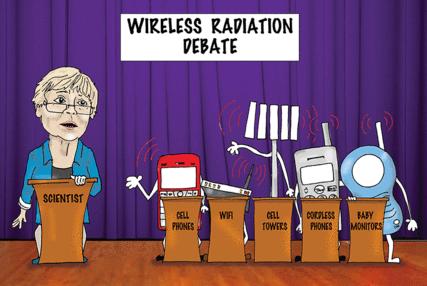 August 2021
August 2021
We have exposed computer myths in previous editions,
(Tech Myths December 2017, http://kdubrovin.com/pub/newsletter/dec2017.html) and (More Tech Myths January 2019, http://kdubrovin.com/pub/newsletter/jan2019.html) of this newsletter but the myths continue. So, this time I will go into a little more detail.

Myth:
You should you defragment your hard drive. Defragmentation used to be a standard maintenance procedure. But is that still true?
Reality:
The short answer is no. If you have a typical hard disk drive, (not a solid state hard drive) Windows 7, 8, 8.1 and 10 will defragment the hard drive automatically as needed. If you have solid state drive the auto defrag is disabled.
With a solid state drive there is the issue of longevity. Defragmenting is not needed. In fact, defragmenting a SSD will only “wear it out” faster. The NAND flash used in SSD’s has a limited number of write cycles. That is because the frit step in writing to an SSD is to ease the cell and then write the new information. Each time the cell goes through an erase cycle a tiny charge is left in the floating gate transistor. Eventually this charge builds up to the point where the gate can’t be flipped anymore and you can no longer write to the SSD. You can, however still read from the drive since reading only requires checking the voltage of the cells, not changing it.
Because of this the SSD’s have a wear leveling feature to distribute data writes across all blocks to make sure the flash memory wears evenly. That means that defragmenting is not needed since that data is spread across the drive and it should be. The controller can access any part of the SSD at any time since it doesn’t have to wait for the hard disk to rotate around to the read head. The consumer SSDs sold in the last few years typically have about three thousand write cycles. With a two hundred gigabyte drive you could write two hundred gigabytes three thousand times. Chances are you will never hit that limit.

Myth:
The Windows registry need to be “cleaned up”.
Reality:
The Windows registry is a hierarchical database that stores low-level settings for the OS and applications that opt to use the registry. Device drivers, services, Security Accounts Manager and the User Interface all use the registry. Counters for system performance profiling also use the registry.
Companies that make registry cleaning software will tell you that scanning and cleaning your computer will make it run faster. The cleaner finds unused registry keys and remnants of malware and marks them from removal. After removal a restart will likely be required for the changes to take effect.
The registry in just about any Windows computer always contains a certain amount of garbage. It may have been “clean” when you started it up for the first time but after a while the garbage begins to collect. When you uninstall an application, the uninstaller should remove the registry entries but often that process is incomplete or missing altogether. An old printer, camera or other device that you no longer use often leaves a few lines in the registry. The registry in a Windows 10 Pro system can have approximately six million lines of information. The system reads all of this on startup and makes the necessary settings requested by the various keys and sub-keys. If you remove a few dozen lines and the instructions they would have issued to the system that might speed things up a little but with gigabit speed processors the gain is going to be infinitesimally small.
Many of these software packages also contain an antivirus scan. Scanning for malware is a good idea but I would recommend a purpose-built application rather than something added into another program as an afterthought.
The down side is that you can really scramble a Windows computer by making changes in the registry. We make changes to the registry all the time but usually through another application, like Control Panel or Settings. These apps offer some protection by checking what you are actually doing. A little warning and a clickable link asking if you really want to do this can save the day. Directly editing the registry either with a “cleaner” or Regedit can be dangerous. You may end up with a computer that will not boot up at all.
I would recommend making a backup copy of the registry on a bootable device before embarking on any registry “cleaning” endeavor. That way you can restore the system if something goes wrong.The bottom line is registry cleaning is seldom very useful and can potentially be very harmful. As WOPR told Falken, “The only winning move is not to play”. Try a nice game of chess, (of maybe Call of Duty) instead.

Myth:
Cell phone towers emit dangerous radiation.
Reality:
I thought we had spent enough time going over these claims but there are still Facebook posts and alternative health sites pushing this idea that cell phone towers emit dangerous radiation. So much for the “fact checkers” and dis-information purging. The rollout of 5G networks seems to have resurrected the “Tin Foil Hat” brigade.
Yes, the cell phone towers emit electro-magnetic radiation, they wouldn’t be much good if they didn’t. It is non-ionizing radiation and it is all around us all the time. There is a big difference between sticking your head into a microwave oven at over a thousand watts and being hundreds of feet away from a 5G transmitter broadcasting with forty watts.
4G LTE towers are so common that most people don’t even notice them anymore. We are bathed in microwave radiation by WiFi devices even in our homes. The gigabit frequencies being used by the really high speed 5G stuff have even less penetration. In fact, it is a problem since you lose that high-speed capability as soon as you walk into a building or get into your car. The higher the frequency the shorter the range and the weaker the penetration.
So go forth with confidence and leave the tinfoil hat at home.
And remember — always back it up!